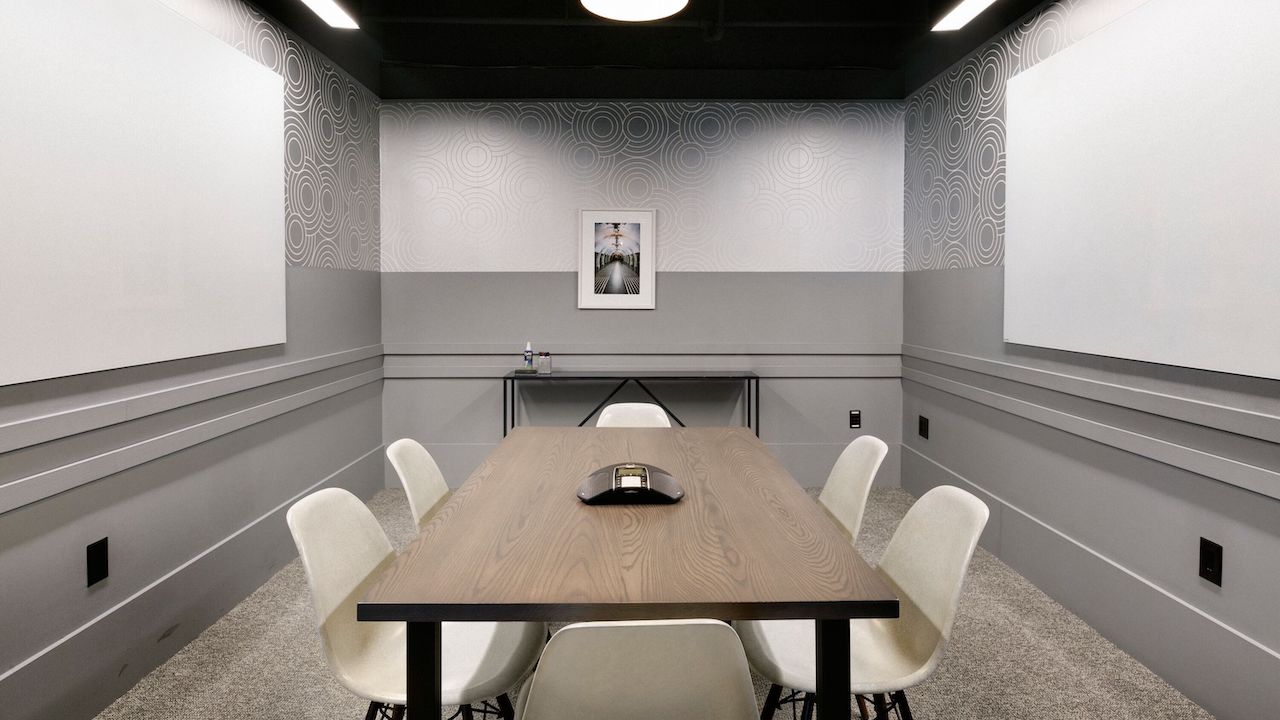WeWork Deploys Thousands of Konftel Wireless Conferencing Solutions Worldwide

New York-based WeWork provides collaboration spaces for 500,000-plus members in more than 150 cities across six continents. Among the technology solutions in these rooms is a stockpile of roughly 10,000 wireless IP-based Konftel 300Wx conference phones.
“Globally, we have more than 16,000 conference rooms,” said Nick Nienaber, head of audiovisual at WeWork. “For those rooms where we offer members communication technology, we ended up having pretty specific needs, and Konftel has been an incredible partner in providing the right solution.”
[The Technology Manager's Guide to Collaboration in the Post-COVID World]
Locations are managed by local staff, who need to ensure the available technology is ready and operational each time a WeWork member wants to use a space. In the beginning, the company had a small team dedicated to deploying and supporting technology, which made offering communication devices a challenge.
Early attempts to offer other companies’ conference phones in WeWork’s coworking facilities hit various snags. Some members would unplug them from the wall to access power for other use, or they’d disconnect the network cable. Depending on the size of the room, others just wanted to move the phones around freely.
“The members were decommissioning the devices for the next member who might want to use that conference room,” said Ofir Hirak, director of technology for WeWork. “This presented a big IT hurdle.”
Eventually, Hirak previewed a new conferencing solution from Konftel, the 300Wx. The wireless conference phone includes a charging cradle and a SIP-compliant Konftel IP DECT base station for enabling cordless communication from the conference phone to the physical IP network. The DECT standard (Digital Enhanced Cordless Telecommunications) is used widely around the world and doesn’t interfere with other wireless technologies in common use, such as Wi-Fi and Bluetooth. This was important to WeWork because it employs a global technology standard across the vast majority of its more than 800 locations.
A daily selection of features, industry news, and analysis for AV/IT professionals. Sign up below.
Early on, it was clear that not every WeWork conference room required a conferencing phone. Usage data from its VoIP providers helped the technology team identify how many rooms needed to offer communication capabilities and therefore how many 300Wx solutions Konftel would deliver.
“All told, WeWork has been the biggest end user project in North America we’ve collaborated on,” said Tommy Edlund, Konftel director of global sales. “WeWork adopted the Konftel 300Wx across its conference rooms based on its design, wireless capabilities, performance, and ease of use.”
Each Konftel solution incorporates the company’s patented OmniSound technology and support for wireless HD calls, resulting in natural-sounding communication. The Konftel 300Wx can support meetings of up to 20 people, and the wireless conference phones last up to 60 hours per charge (270 hours in standby), a huge benefit for the WeWork staff who need to make sure the phones are ready each time a conference room is in use. In each WeWork conference room, the Konftel 300Wx phone and charger are set out for members’ use, while the Konftel IP DECT sits in a box behind the room’s display along with other AV equipment.

“Rooms can be serviced and managed individually, so you don't have to worry about one rack of devices or chargers, which was really good for us,” Nienaber said.
The 60-hour battery life helps, especially when members forget to put the Konftel conference phones back with their chargers. “We don’t keep the phones and chargers centralized and don’t always have somebody doing sweeps to make sure they’re charged at the end of every day, so the phones sometimes get left on the table,” Nienaber said.
WeWork continues to work with Konftel, not only in support of its existing conferencing technology, but also as it looks to the future. For example, according to Hirak, when WeWork wanted to disable a feature of the Konftel phones that could allow members to record calls, Konftel engineers quickly developed a firmware update. When WeWork explored new VoIP providers in certain markets, Konftel engineers helped with that firmware change, too. And because the Konftel 300Wx is upgradable via SD memory card, WeWork staff could easily administer the software changes.
“We were able to mail SD cards to the sites and community managers were able to pop them in, push a couple of buttons, and the phones were up and running on a new VoIP platform in a couple of minutes,” Hirak said.
Looking ahead, WeWork is exploring ways to offer more video conferencing capabilities to its members. The challenges are less technical—Konftel solutions, including cameras, already support the breadth of popular video collaboration platforms—than logistic. Not only must a WeWork conference room solution support all the video platforms members might prefer, but it must also be able to seamlessly change from Google Hangouts for one meeting to Zoom for another, for instance, as members take turns using the WeWork space.
“WeWork’s conferencing needs are pretty unique, especially when it comes to eventually implementing video,” Nienaber said. “Konftel has been proactive about showing us new things. We’re very much on the same wavelength when it comes to what is important to our members.”
The AVNetwork staff are storytellers focused on the professional audiovisual and technology industry. Their mission is to keep readers up-to-date on the latest AV/IT industry and product news, emerging trends, and inspiring installations.
